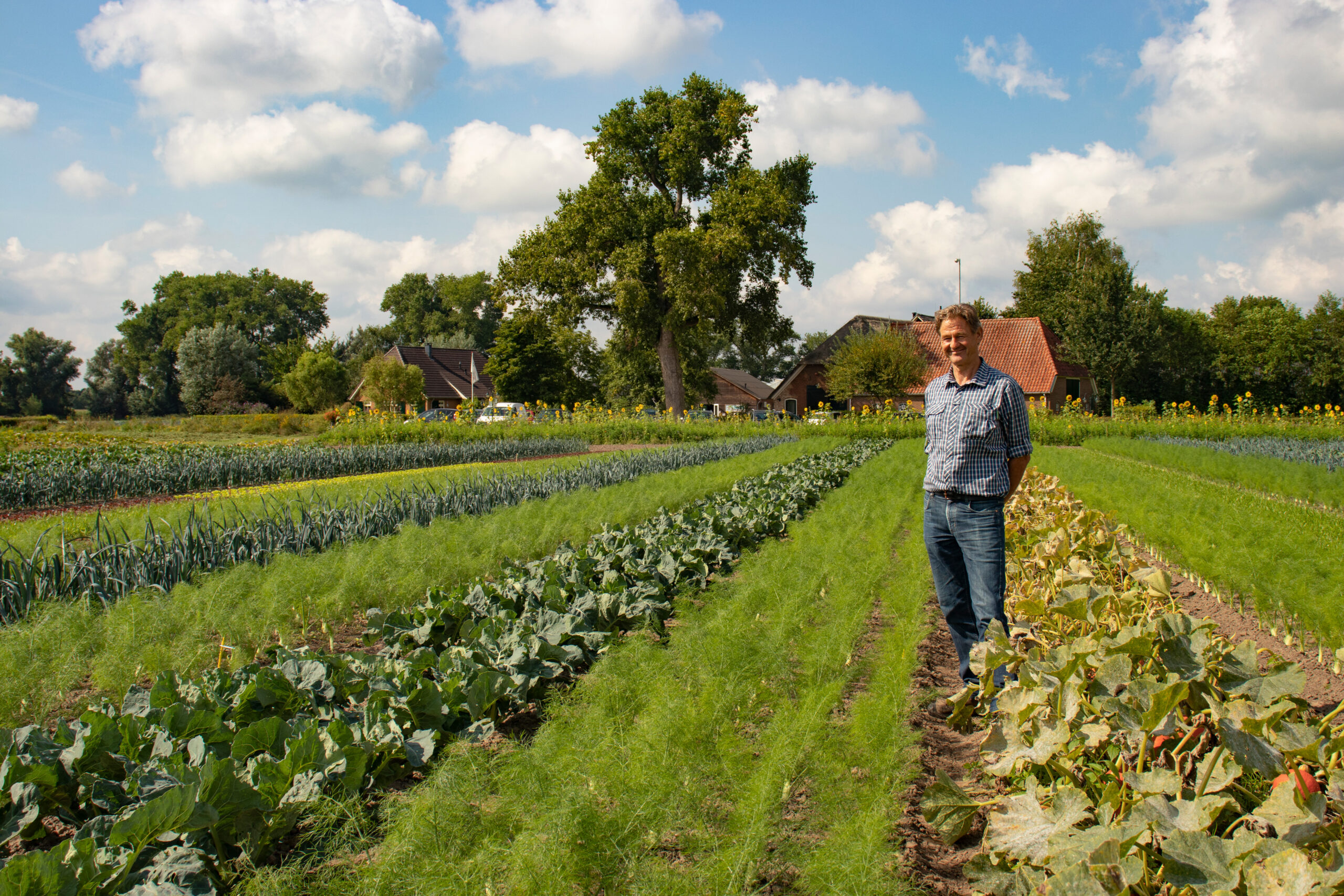Pumpkin expert Marcel van Diemen
How do you become a pumpkin expert? We asked Marcel van Diemen. He has been working for 14 years at organic seed breeder Vitalis Biologische Zaden and arranged the seeds for the pumpkins of our citizen science project MoestuinMix that participants have used for the experiment. He is almost retiring. We interviewed him about his motivations to join CropMix and of course we also asked for some pumpkin tips.
Marcel studied tropical agriculture in Deventer in the 1980s. As there was little work in the tropics, he left for Portugal where he grew vegetables with a former fellow student. "We grew carrots, onions, potatoes and so on. I did that for four years. For local Portuguese market, but also carrots for export to the Netherlands." Eventually, Marcel still couldn't earn enough there and left for Cyprus to work for a Dutch company in plant breeding. He tried crossing tomatoes to counter TYLCV (Tomato Yellow Leaf Curl Virus). After 3 years, he returned to the Netherlands where he joined Enza Zaden. "In 1991, I started at an outdoor vegetable breeding programme. Among others, we worked on endive, spinach, chicory, celery and celeriac. Over the years, the number of crops became fewer, as the programmes grew, breeders joined and took over crops. Spinach and chicory I did for 22 years."
Meanwhile, Marcel's interest in organic farming had grown. "I saw the positive contribution of organic for breeding, such as vigour in spring and plants that grow well under low nitrogen conditions." So in 1994, he switched to Enza Zaden subsidiary Vitalis Organic Seeds. At that time, he also started breeding pumpkins.
"Pumpkin breeding needed new impetus. Cultivation was taking place in Europe, but the breeder was in New Zealand. Vitalis seemed like a good location for us to start breeding ourselves and that's what I started doing and have been doing for 14 years now."
Why pumpkin?
"Pumpkin is a crop that fits well into rotation. Crop rotation means having a different crop on the same soil every year. This is essential to keep the soil healthy as an organic grower. The best is as wide a rotation as possible of, say, 1 in 6 or 1 or 8. That means you only come back with pumpkin on the same plot after 8 years. In intermediate years, you grow other crops.
"Pumpkin fits well in a rotation because it is from a different family than, for example, endive, onion, spinach. Pumpkin belongs to family of cucumber-like plants, but we grow it as one of the few in open ground. Pumpkin also has different soil diseases than, say, potato or chicory. So by rotating those together, you build up fewer diseases in your soil. It is also a crop that is easy to grow and a product that keeps over the winter period. As a result, you can market it over a longer period. These are all favourable characteristics."
"Over the years, we as a company have become more and more specialised in pumpkin. Pumpkin used to be a landrace. Landraces are selections in a population and hybrid variety is a cross between two lines. A hybrid variety generally has more vigour, higher yield and you can also combine traits such as resistance to fungi or viruses that are important for bio in hybrid varieties."
Many viruses are transmitted by aphids. Conventional growers can spray against that, but the organic grower naturally requires pumpkin that are either aphid-resistant or virus-resistant. So we have developed hybrids with resistance to the virus. Now we are also researching pumpkin that are resistant to aphid. We are developing that for organic growers, but it is also very useful for the conventional grower to have as well.
What has CropMix brought for you?
"We do research on organic cultivation and breeding. Some of our larger clients made the switch to strip farming. I asked about motivations. They told about better biological control, less rapid spread of diseases and crop combinations that positively influenced each other. That's when I contacted Dirk van Apeldoorn. We talked it through what possibilities there were to apply strip cropping in breeding and Dirk saw good opportunities. In 2019, I created the first strip cultivation trial design and in 2020 we started strip cultivation with 6 crops we are currently working on. Before CropMix existed, we already had strip cropping."
Vitalis' strip crop rotation includes fennel, cauliflower, lettuce, leeks, squash, crops we breed ourselves. The sixth crop in the rotation is grass clover, a rest crop. "With the help of interns from WUR, we measure yields, quality and taste, among other things. Every week we also do drone observations. We use those recordings for analyses on, for instance, vigour or to see how a disease like mildew is spreading. There are also three varieties per crop in each strip, so there is genetic diversity and we can investigate how this diversity can be used to develop better varieties for this new way of growing."
"We are convinced that we can develop varieties that are better suited for strip cultivation. For example, a cauliflower that works better with pumpkin, lettuce or leeks, so we can also offer them as a package to growers."
Tips for growing pumpkins
An important requirement in pumpkin cultivation is that you make sure that your planting material is not used until after Ice Saits above ground. This is roughly after 15 May. Until then, you have a chance of night frost and pumpkin is sensitive to that.
To germinate your seeds, you can do two things: large growers sow directly in the open ground. This can, of course, be done in the vegetable garden too. You can also do this a little before IJsheiligen, as the soil is still cold and it takes a while for the seed to germinate. You can also pre-sow in potting soil in a greenhouse or just in your kitchen.
Then plant the little plant outside as soon as the first real leaves appear. When a pumpkin seed germinates, you first see two cotyledons. These are not real leaves, but they have an important function. During the first growth, they ensure that the plant can already form roots and exchange energy. After that, real leaves form. When the plant has these leaves, it is time to plant out. Do not wait too long. Because it is often darker indoors, the plant will stretch to grow towards the light. This may cause the plant to become lanky and break down faster.


